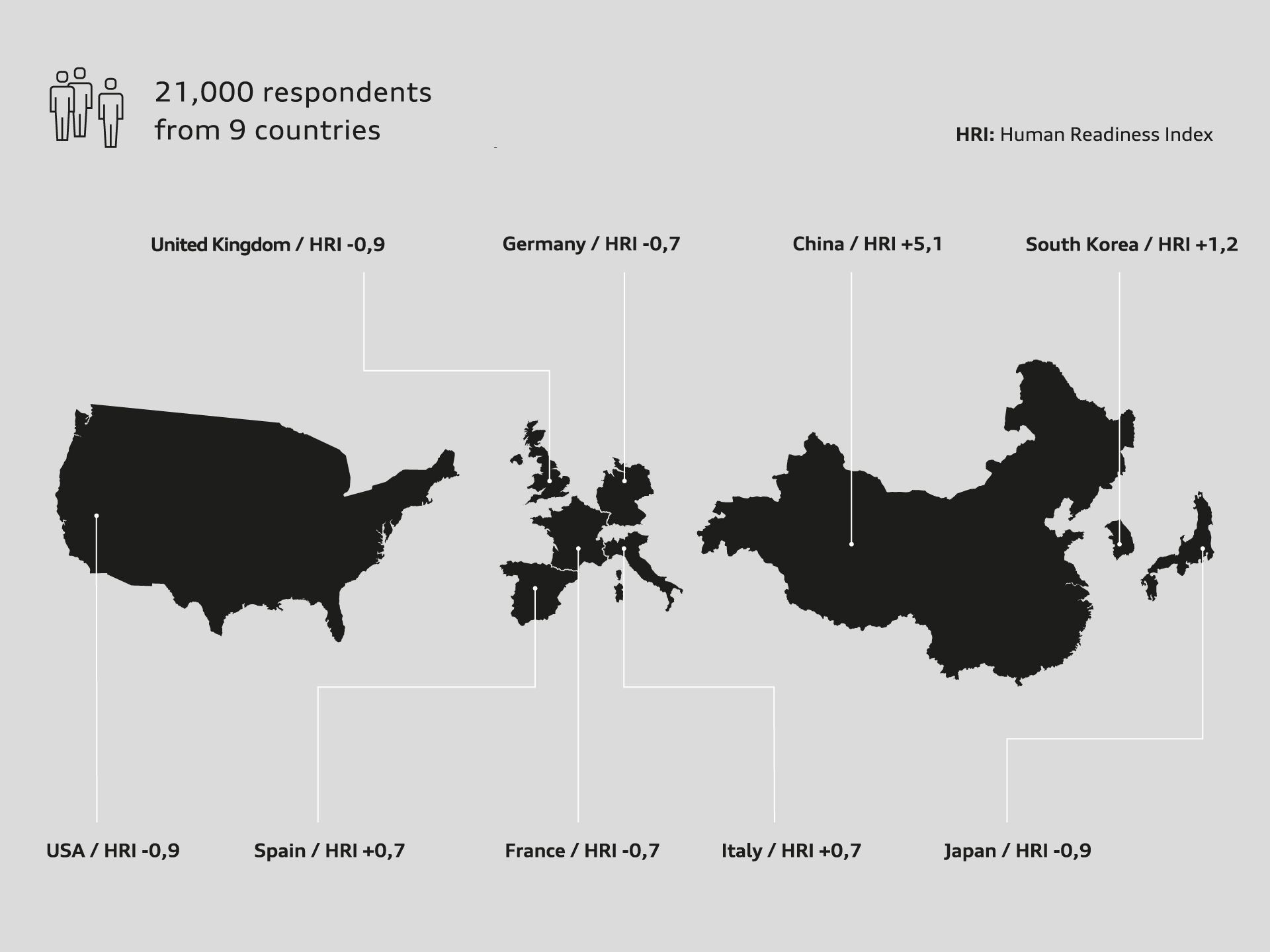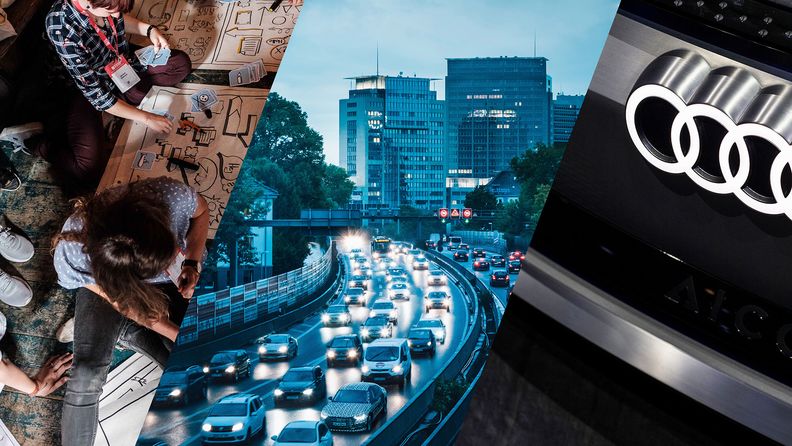“People are the be-all and end-all”

What is the &Audi initiative’s purpose and what topics does it address?
Saskia Lexen: Through the &Audi initiative, we want to help ensure that a responsible approach is adopted to tapping the potential inherent in new technologies—specifically autonomous driving—and that Audi is able to share its expertise and participate in debate. Our focus is not only on what is legally acceptable but also what is most desirable from an ethical point of view. For us, people are always the be-all and end-all of our considerations and the starting point for probing how technology can help individuals and society achieve their goals. We believe that automated driving in particular holds great promise and that the technology will enhance our customers’ lives. At the same time, it is not only a wonderful opportunity but also our responsibility to share important insights gained through our development work. We would like to contribute to cultivating reasonable expectations regarding the technology’s potential and limits within society. To do so, we need to know people’s thoughts and feelings.
Why is it so important for a company like Audi to address the use of new technologies and engage as many customers as possible in the process?
Automated driving is a key technology that promises to improve road safety and make travel more convenient. By sharing knowledge and inviting dialog, we also encourage the public to embrace and adopt the technology in the long term. People are more likely to share data if this translates into tangible added benefits for them and others. When it comes to tomorrow’s automated driving, this will entail users consenting to the collection of vehicle data that cannot be associated with a specific car or person. We will then use this data to evaluate aspects such as vehicle environments and usage. As the connected customer vehicle fleet grows and the quality of the available data improves, so we will be able to deliver greater customer benefits in the next step. When combined with insights from our test and virtual vehicle fleets, this data will in the future provide a starting point for ongoing customer functionality optimization. The upshot? Much shorter innovation cycles.
How are you tackling these issues?
The &Audi initiative uses various event formats as a platform for dialog. At workshops and conferences, software engineers rub shoulders with philosophers, start-up entrepreneurs meet psychologists and bio-ethicists share the room with lawyers. Colleagues from all Audi divisions network with outside experts and collaborate on finding answers to questions that concern the public. Take, for instance, the panel discussion on whether AI can write scripts, which was staged as part of the 2019 Berlinale film festival. The 2017 artificial intelligence conference at MIT in Cambridge, Massachusetts, in the U.S. is another example. There, the focus was on driving safety and how artificial intelligence can improve it.
The &Audi initiative has conducted a detailed study. Can you tell us what it was about?
Last year, Audi and market research institute Ipsos conducted a representative online study. Entitled “The Pulse of Autonomous Driving,” it investigated how reasoned arguments, emotions, values and lifestyles shape attitudes toward autonomous driving. In total, we polled 21,000 people from nine countries—China, France, Germany, Italy, Japan, Spain, South Korea, the United Kingdom and U.S.—on three continents about their views. The study’s findings are broken down into three parts, starting with the “emotional landscape.” This maps out emotional attitudes toward autonomous driving in the countries surveyed. Then there’s the purpose-designed “human readiness index” (HRI) that illuminates how attitudes toward autonomous driving tie in with sociodemographics. Finally, “user typology” looks at the way different outlooks on autonomous driving mesh with respondents’ living environments. As a result, the study points us toward key areas for action that will influence public acceptance of autonomous driving. It emerged that there is still room to improve people’s understanding of this topic.
Which of the study’s findings was the most surprising and which was the most foreseeable?
It was no great surprise that only very few respondents (8 percent) felt able to “explain the topic.” You would probably get a similar result with other technical topics, such as the difference between an automatic and a dual clutch transmission. But I was caught off guard by the tug-of-war between technological innovation and change. While most respondents expressed both an interest in autonomous driving (82 percent) and curiosity about the topic (62 percent), levels of concern around the loss of control (70 percent), technically unavoidable residual risks (66 percent) and the lack of a legal framework (65 percent) are equally high. After all, assessing a new technology initially requires no more than an open mind. At this stage, it is not about actual risks or costs. Warming to the idea of change, however, is a commitment that brings concerns about risks and costs into focus. Autonomous driving is an attainable advance and unlike anything that has been seen before. Maximizing interest and curiosity while minimizing concerns calls for better technology, increased safety as well as a robust ethical and regulatory framework. So it’s understandable that the bar is being set high.
Transnational understanding of autonomous driving

Different types of users are described within the study. How does a user typology help Audi?
We identified five user types whose stance on autonomous driving ranges from outright rejection to enthusiasm—or from suspicious do-it-yourself drivers who regard anything unknown with distrust and won’t relinquish the steering wheel, to tech-savvy passengers who wish they could jump into a self-driving car today. In our communications, we not only have the opportunity to respond to different needs but also, for instance, to address country-specific characteristics. The user typology highlights divergent attitudes to autonomous driving that stem from people’s living situations. This is why we need to tailor our communications and individual autonomous driving offerings to these varying needs. These can range from information to tech experiences, such as test drives. By the way, anyone can discover for themselves which autonomous driving user type they are by taking the test on the study website.
Transnational emotional response to autonomous driving

What do you consider to be the study’s most important findings?
Technological advances alone are not enough. We can’t afford to lose sight of the human element.
When it comes to the future of autonomous driving, the question is not when or where, but what form it will take. A big part of that is the breadth and depth of offerings customers can look forward to. Since people’s needs, preferences, attitudes and circumstances differ, we need to test new technologies with customers at an early stage in order to offer targeted functionality.
What activities does the &Audi initiative have planned going forward?
We would like to make even greater use of the knowledge we have already gained to promote dialog between internal and external experts as well as society at large. In the coming year, we can also look forward to movement in the debate on the legal framework, as this topic is currently moving higher up the political agenda. Additionally, by upping our podcast and social media activity, for example, our aim is to make AI and autonomous driving a topic that’s part and parcel of everyday life.
Which aspect of artificial intelligence do you personally find most fascinating?
The way AI is being applied in journalism through the convergence of language and algorithms is really exciting. For a case in point, look no further than the AI that cherry picks the key points from books on specialist subjects so that I can read them as short summaries in an app.
What would you say to someone who fears technological developments because of the loss of control, for one thing?
Technological change always brings opportunities with it. By approaching technological innovations with an open mind and positive attitude, each of us can do our part in driving their widespread acceptance in society and help us make everyday life better in big and small ways. It is nevertheless important that everyone can and should move at their own pace.














